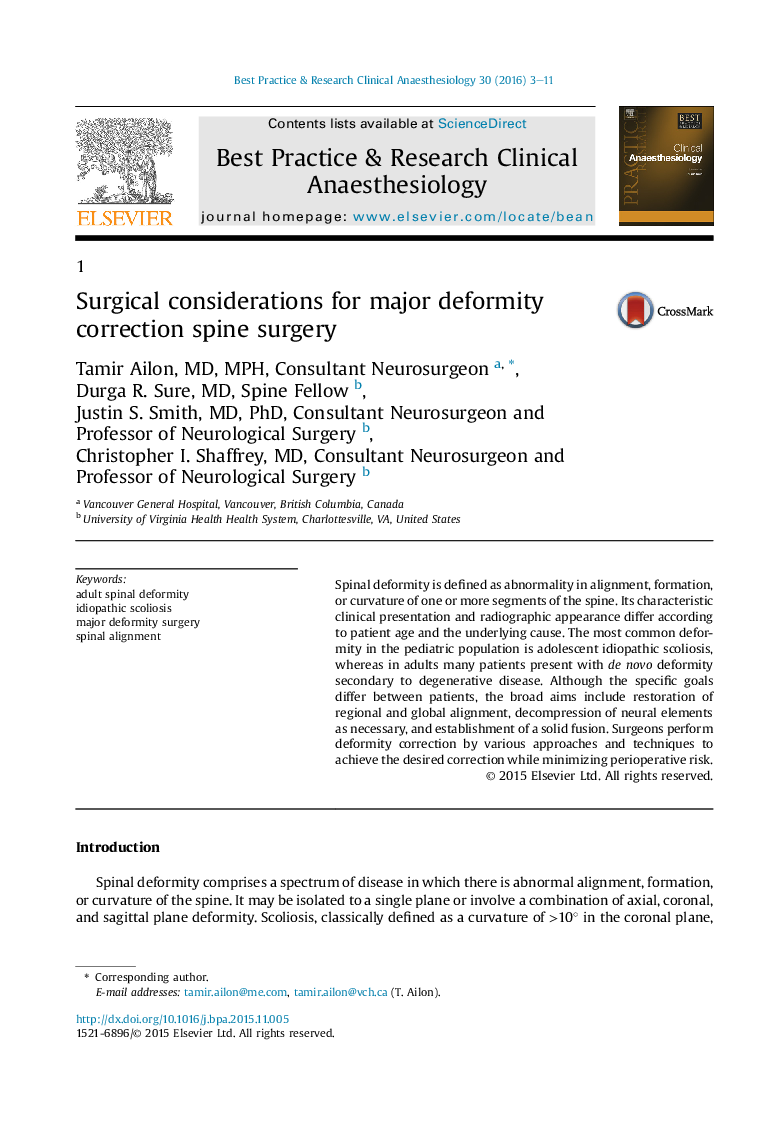| Article ID | Journal | Published Year | Pages | File Type |
|---|---|---|---|---|
| 2748326 | Best Practice & Research Clinical Anaesthesiology | 2016 | 9 Pages |
Spinal deformity is defined as abnormality in alignment, formation, or curvature of one or more segments of the spine. Its characteristic clinical presentation and radiographic appearance differ according to patient age and the underlying cause. The most common deformity in the pediatric population is adolescent idiopathic scoliosis, whereas in adults many patients present with de novo deformity secondary to degenerative disease. Although the specific goals differ between patients, the broad aims include restoration of regional and global alignment, decompression of neural elements as necessary, and establishment of a solid fusion. Surgeons perform deformity correction by various approaches and techniques to achieve the desired correction while minimizing perioperative risk.
